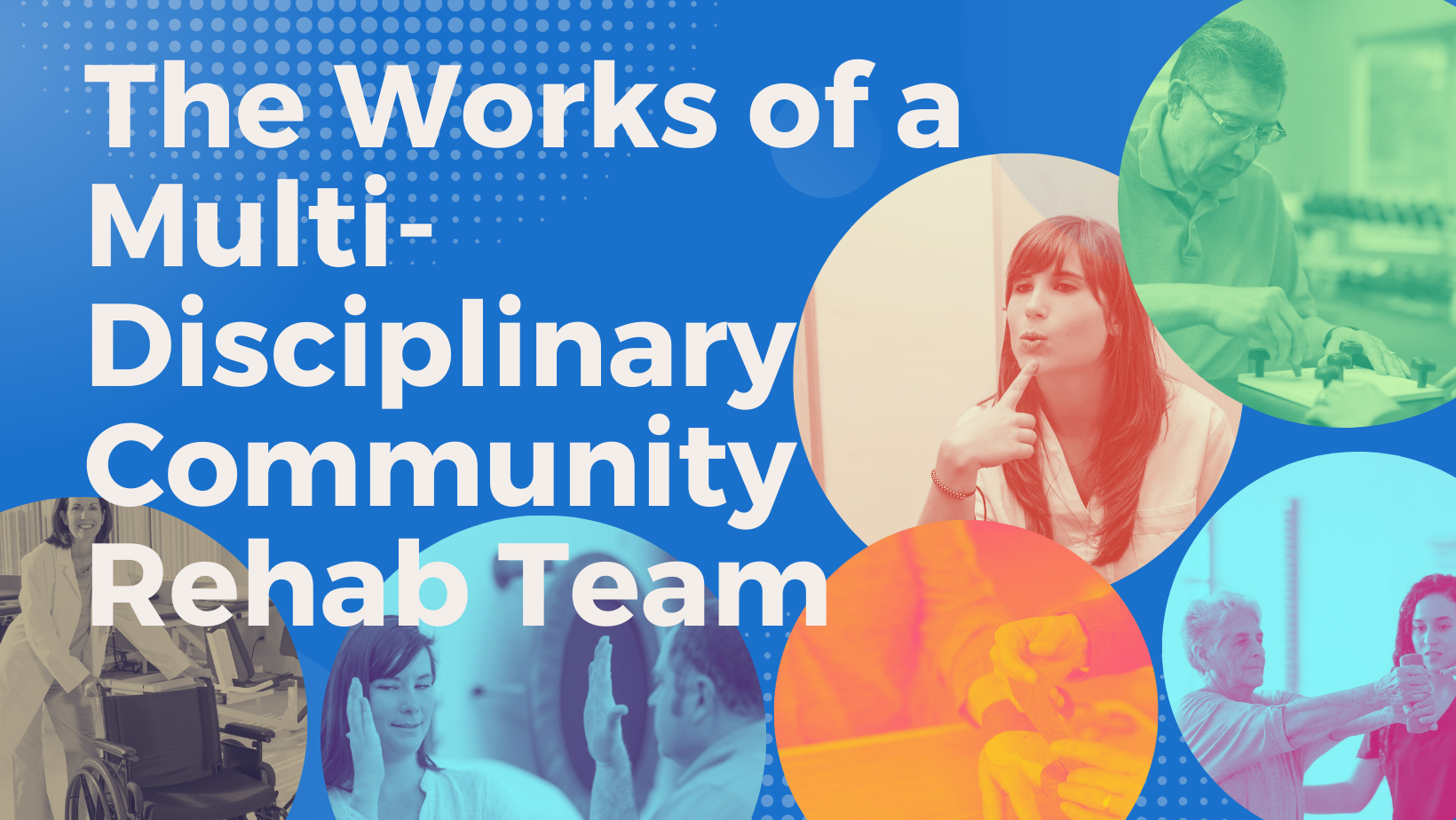As we speak, the concept of adopting a multi-disciplinary approach towards providing care in hospital settings as well as within the community has been growing. One might raise the question – why is there an urgent need for the healthcare system to implement such an approach? Well, let’s start by defining the term.
What are Multi-Disciplinary Teams?
Multi-Disciplinary Teams (MDTs) refers to a team of professionals of different specialisations working together to develop and deliver an optimal healthcare plan as a concerted unit. In the era of healthcare delivery reform, MDT-based care delivery is an integral strategy to enhancing care quality, reducing treatment time, lowering costs, and improving client safety – raising the standards of care and professionalism for the client and practitioner respectively.
Why do we need community based Multi-Disciplinary Teams?
Community MDT has been intentionally championed and is effectively shaped by teams that have consisted of occupational therapists (OTs) over many years. As compared to the institutional forms of MDT found in typical hospital settings, community-based MDT focuses on a more holistic approach that goes beyond the medical model of addressing mortality or the survival of a condition.
As part of a biopsychosocial model, the community based MDT works together to recommend and develop client-centred treatment and intervention plans that encompass all the environmental, occupational, physical, psychological, social, and cognitive aspects of life that are meaningful and important to a client. Clients and their caregivers are enabled and empowered to be part of the decision making process in their rehabilitation journey and care.
As a result, this process yields better outcomes and efforts can be sustained beyond what the team can achieve alone or in the clinic – all of which leads to a more positive and progressive form of healthcare.
Factors hindering rehabilitation, recovery and care
- Lack of collaborative flow within teams
Traditionally, MDT teams in most institutions have largely been spearheaded by doctors. Recommendations by the team would often be overruled by the leading doctor when it comes to direction of treatments and making decisions for the client. While there is nothing fundamentally uncommon with this practice, a top-down hierarchy could disrupt the collaborative flow among the professionals in developing solutions that would have been more holistic for the client.
- Rehabilitation in simulated settings to prepare for discharge to home
Hospital therapists would be working towards helping their clients gradually improve and be well enough to be discharged. When rehabilitation sessions take place in environments that is nothing like their homes, there lies the possibility that the client might not be able to perform the same skills at the same levels that they’ve perfected in the hospital once they are back in their home environment. As clinics that try to simulate the home environment may not be able to fully replicate the client’s own home to its nuances, the performance of the client at home and at the hospital can differ by a noticeable margin.
- So, when can we send this client home?
Even when allied health professionals – who are practitioners of the biopsychosocial model and client-centred practice – are part of MDTs in acute and primary care settings, the typical approach and mindset stems from a very different set of priorities when compared with practitioners in the community. This is because they are positioned to mainly get people stable and well enough to leave the hospitals.
So, what happens after the client leaves the hospital? This brings us to our last point.
- Lack of continuity
There is seldom the opportunity to work with clients once they return to the community. In other words, clinicians in hospitals might always be only “fighting fires instead of preventing them”. To simply rely on the hospital system that is heavily bogged down to provide the immediacy, and especially now post-pandemic, the lengthy down time in between discharge and their follow-up appointment has people wondering “What do I do now?”.
Continuous therapy provided by Community MDTs allows clients with chronic or new medical conditions that much needed healthcare support to learn to function with these fresh challenges. During the crucial rehabilitative stage when clients recover from hospitalisation, the end goal is to let them regain or maintain the functions that enable them to live as independently as possible or before they lose the ability to do so. Thus, it is of utmost importance that therapy should be done in a way that’s familiar to the most natural habitat after a long bout of hospital stay – in their homes.
This provides Community MDTs a golden opportunity to present the most effective and sometimes life-changing interventions to maximise post-discharge recovery and mitigate the development of factors that contribute to decreased recovery potential and other serious complications that delay recovery. People who have lost their abilities to perform activities of daily living and bedridden clients suffering from spasticity are prime examples of the population requiring immediate and continuous attention.
An Enhanced Community MDT Approach
Lifeweavers has taken the Community MDT concept further with both the role of a case manager serving as the key liaison between clients, caregivers and the team, and the idea of social prescribing that seeks to optimise health holistically with the support of a more diverse team.
As part of the Community MDT, the case manager develops a comprehensive view of the needs of clients and caregivers to be that link between service evaluation and service planning, help to reduce fragmentation between services and allow the healthcare practitioners within the team to focus on clinical work and be relieved from case management duties.
With a focus on delivering value to all stakeholders involved, the case manager works towards maintaining the integrity of the therapy plan with a well-defined and organised pathway – keeping up with healthcare protocols, service standards, client goals and intended outcomes. This is accomplished through a framework that takes effect from the moment of new enquiry by helping to disseminate and collect key information to and from the client from the team, to systematically onboard the client, arranging for the initial assessments, formation of the therapy plan, managing the case and providing continuous reviews that is aligned to the identified plan and goals.
Social prescribing is where complementary non-healthcare services like Yoga and Massage could be recommended alongside with mainstream Physiotherapy to enhance the rehabilitation process and extend client’s physical therapy goals. As part of the goals of social prescription to enhance quality of life and yield better health outcomes, Occupational Therapists may recommend the exploration of new hobbies of interest with specialised classes to bring an added dimension of leisure and activity engagement to the client. This community based layer of collaboration that is part of social prescription, also opens up the next level of transition for the client from typical medical treatments to a more holistic suite of health based interventions that are more relatable to everyday living.
The idea of enhancing the Community MDT is to attain quality of life for our clients, maintain high standards of healthcare yet truly harness the effectiveness and efficiency of continuous therapy services in the community without the restrictions typically presented by rigid institutions.




